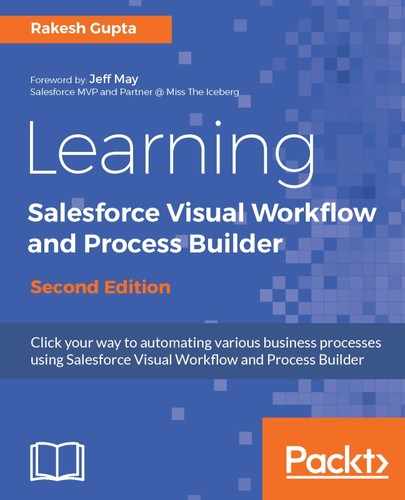In the previous chapter, we discussed some advanced concepts of Flow and Process Builder. We learned how to apply various concepts to automate your business processes. We started the chapter with the concept of deploying or distributing the Flows or Processes. Then, we moved on to discussing the way in which you can display a message to users after a successful login. We also discussed the concepts of Subflow and the Wait element in the Flow. In the end, we discussed a way to use custom metadata types in the Flow and how to create schedule jobs. In this chapter, we will discuss the way in which you can customize the look and feel of the Flow user interface to incorporate with Lightning Experience. We will also discuss how to embed a Flow in Lightning pages. The following topics will be covered in this chapter:
- Enabling Lightning interface for Flows
- Inserting a Flow in Lightning Page
- Displaying Two Column Flow
- Controlling the behavior of Flow when it tries to access inaccessible fields
Until now, we have used classic runtime for Flows. This means that depending on how a Flow is configured for org level, your users see either the Classic runtime or the Lightning runtime user interface when they run the Flow. As the name suggests, Lightning runtime looks and feels like Lightning Experience. In this chapter, we will discuss how quickly you can convert existing classic runtime Flows to display in the Lightning runtime instead. Once you have enabled Lightning runtime for Flows, then you can embed a Flow in Lightning Page--App pages, Home Pages, and Record Pages similar to lighting components. You can even create two column Flows and much more. The Lightning Pages are available in Lightning Experience and the Salesforce1 mobile app.
